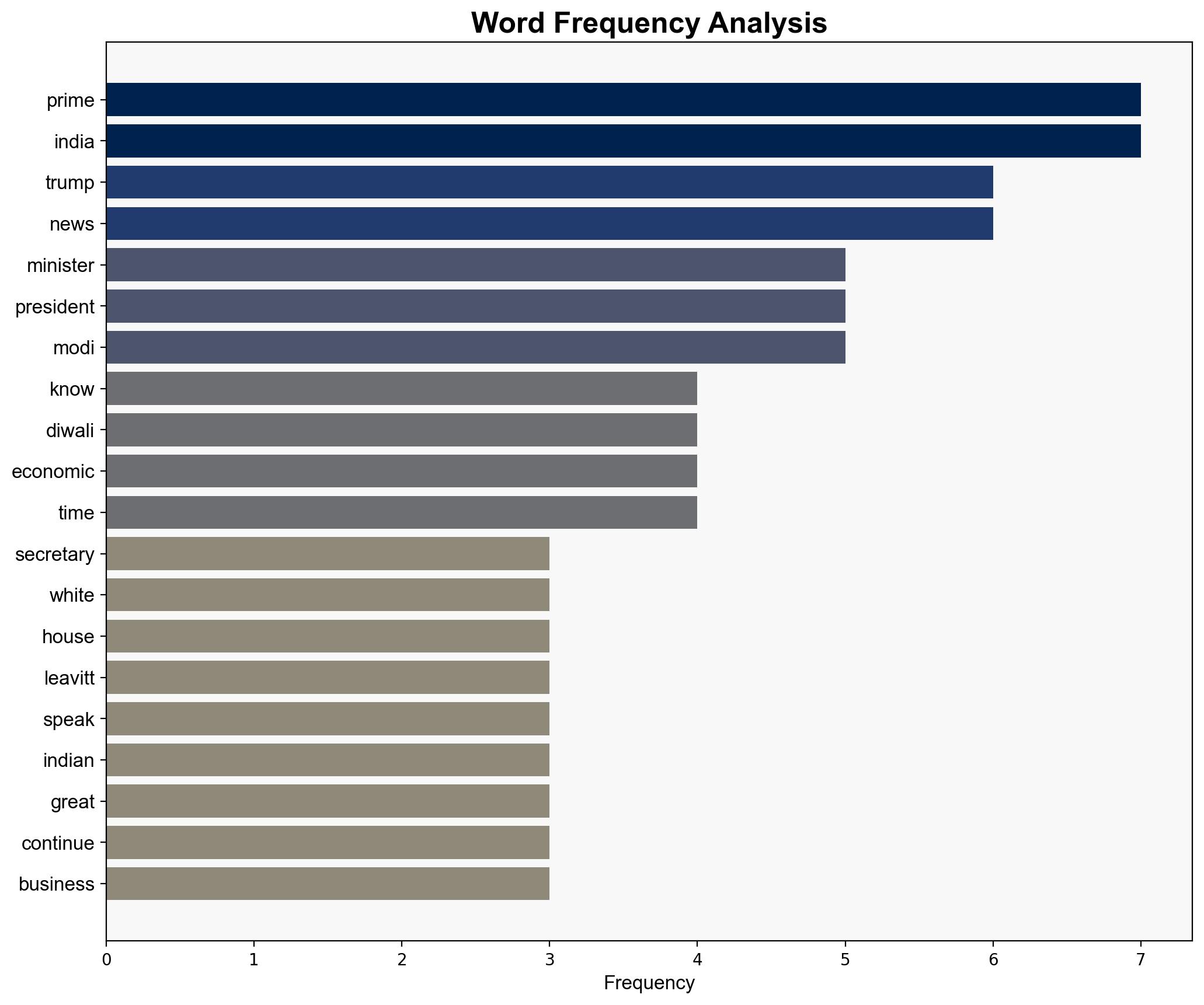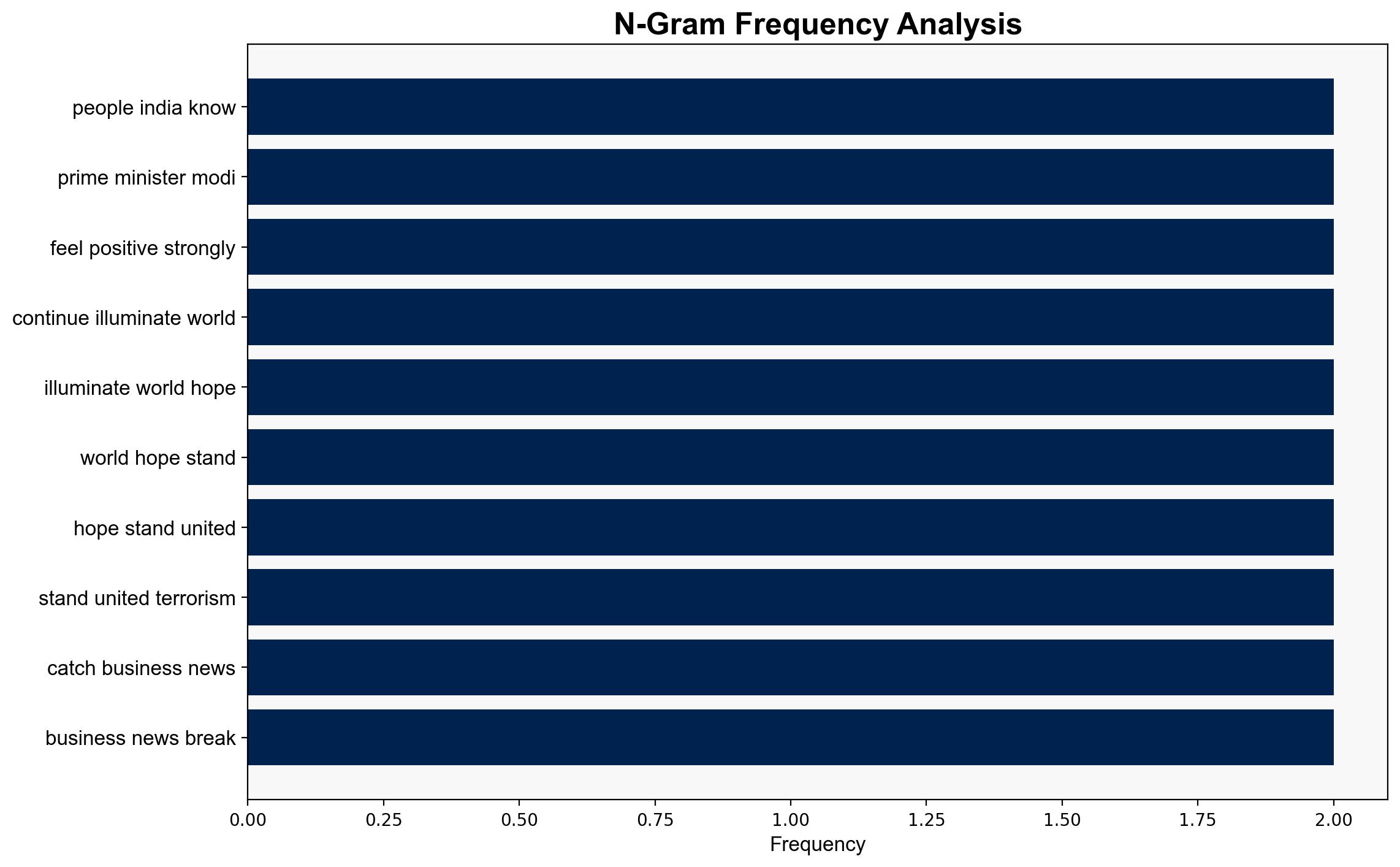‘Why does PM Modi refuse to accept he speaks to Trump’ asks Congress – The Times of India
Published on: 2025-11-05
Intelligence Report: ‘Why does PM Modi refuse to accept he speaks to Trump’ asks Congress – The Times of India
1. BLUF (Bottom Line Up Front)
The most supported hypothesis is that PM Modi’s reluctance to publicly acknowledge frequent communications with President Trump is strategically motivated to maintain a balanced foreign policy stance amid domestic and international scrutiny. Confidence Level: Moderate. Recommended action includes monitoring bilateral communications for shifts in policy alignment and potential impacts on regional stability.
2. Competing Hypotheses
1. **Strategic Ambiguity Hypothesis**: PM Modi is intentionally downplaying his communications with President Trump to maintain strategic ambiguity, balancing relations with multiple global powers without overtly favoring the U.S.
2. **Domestic Political Pressure Hypothesis**: PM Modi is under domestic political pressure to distance himself from President Trump due to potential backlash from opposition parties and segments of the Indian populace who may view close ties with Trump unfavorably.
Using ACH 2.0, the Strategic Ambiguity Hypothesis is better supported due to Modi’s historical approach to foreign policy, which emphasizes non-alignment and strategic autonomy.
3. Key Assumptions and Red Flags
– **Assumptions**: It is assumed that PM Modi’s foreign policy decisions are primarily influenced by strategic considerations rather than personal or ideological alignment with foreign leaders.
– **Red Flags**: The lack of direct statements from PM Modi on this matter introduces uncertainty. The reliance on third-party reports and spokespersons may indicate selective disclosure or information shaping.
– **Blind Spots**: The internal deliberations within the Indian government regarding U.S. relations are not publicly accessible, limiting comprehensive analysis.
4. Implications and Strategic Risks
– **Geopolitical**: Continued ambiguity in U.S.-India relations could affect regional alliances and India’s positioning in the Indo-Pacific strategy.
– **Economic**: Trade negotiations may be impacted by perceived instability in diplomatic communications.
– **Psychological**: Public perception in India regarding U.S. relations could influence domestic political dynamics and electoral outcomes.
5. Recommendations and Outlook
- Monitor official communications and policy shifts between India and the U.S. for indications of strategic realignment.
- Engage in diplomatic channels to clarify intentions and mitigate potential misunderstandings.
- Scenario Projections:
- Best Case: Strengthened U.S.-India relations with clear communication channels.
- Worst Case: Deterioration in bilateral ties leading to regional instability.
- Most Likely: Continued strategic ambiguity with periodic clarifications to manage domestic and international expectations.
6. Key Individuals and Entities
– Narendra Modi
– Donald Trump
– Jairam Ramesh
– Karoline Leavitt
– Vinay Kwatra
7. Thematic Tags
national security threats, foreign policy, diplomatic relations, U.S.-India relations




